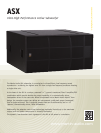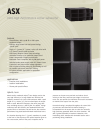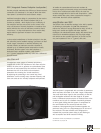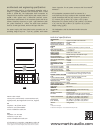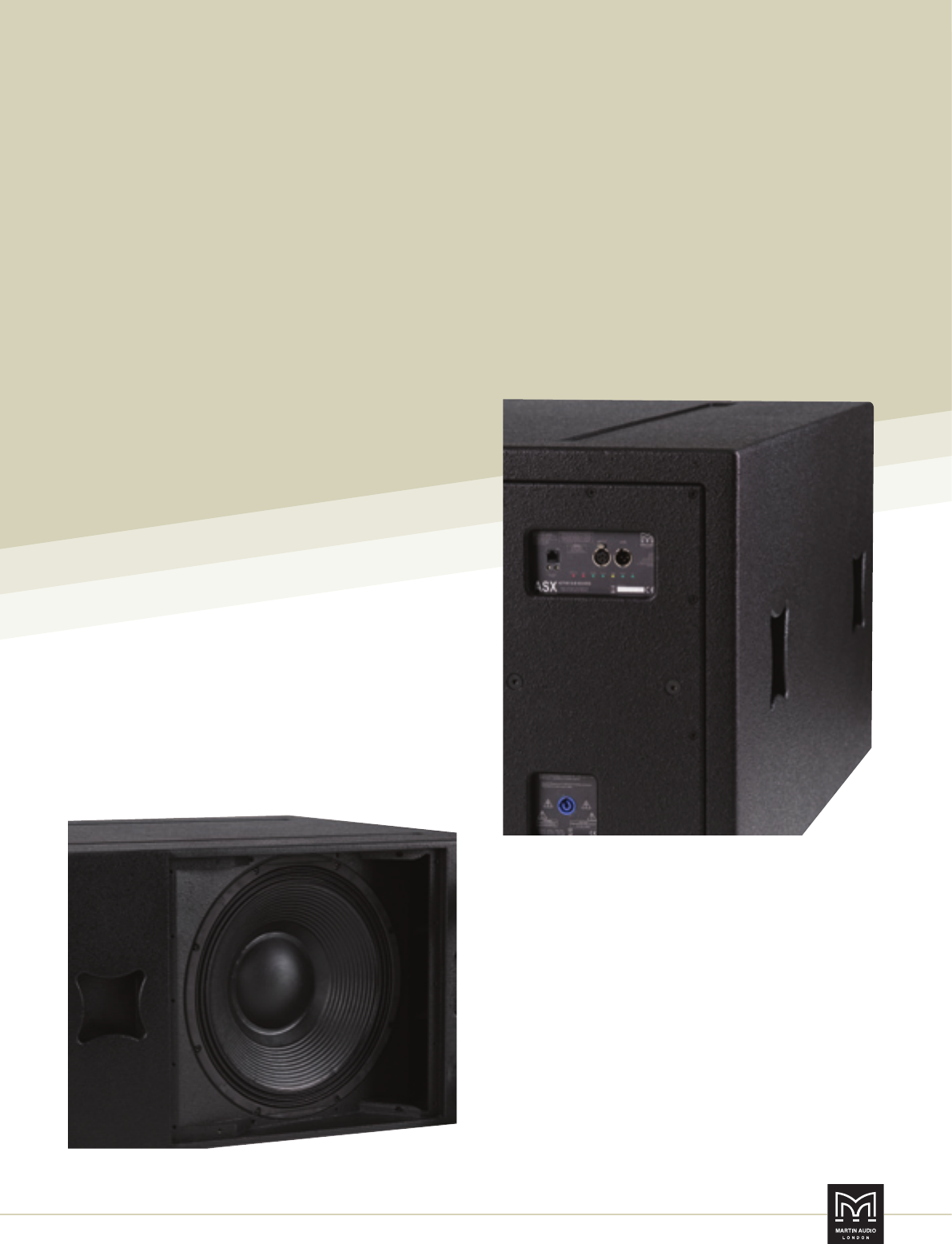
commercial installation: ASX © Martin Audio Ltd.
IPAL (Integrated Powered Adaptive Loudspeaker)
The IPAL principle maximises the efficiency of electro-acoustic
conversion of a transducer i.e. the way in which the mains
input power is converted into actual acoustic output.
Traditional transducer design is compromised by the need to
present an amplifier with a load impedance that is as
resistive as possible – which implies a loss of efficiency of
the transducer and also sets a limit on the current in the
voice coil because of thermal dissipation. A transducer that
would minimise the voice coil resistance, maximise the Bl
“force factor”, or that would present a more reactive load,
would enable a significant increase in the conversion
efficiency.
In the practical embodiment of the IPAL principle in the ASX,
DSP controlled, active feedback topology “emulates” an ideal
virtual “target” transducer to maximise efficiency and
maintain linearity at maximum excursion. Distortion is
reduced by up to 20dB and power compression virtually
eliminated. The IPAL system in the ASX comprises a
dedicated Class D amplifier module, a DSP system,
a 21" (530mm) transducer unlike any other and a differential
pressure sensor.
the drive unit
A neodymium motor system of immense proportions,
coupled with a voice coil impedance of less than one ohm
enables the drive unit to generate an unprecedented force
upon the air load presented by the enclosure. This ability
dominates the rest of the driver’s electro-acoustic
parameters thus creating the “virtual transducer”.
By adjusting the processing in the control loop, fixed
parameters such as moving mass, resonant frequency and
even cone area can be “virtually” adjusted and optimised.
To handle the unprecedented forces and resultant air
pressures requires an extremely strong cone material. Made
from a mix of cellulose and carbon fibres, the cone has
excellent strength when in tension and compression – unlike
woven aramid fibre cones, whose compressive strength is
much lower than their tensile capabilities.
amplification and DSP
The efficient Class D amplifier topology in the ASX is capable
of delivering a peak power of 8.5kW and dramatically
reduces the amount of energy dissipated as heat, as well as
being much smaller and lighter than other amplifier
topologies. The switchmode power supply, with Power Factor
Correction for worldwide operation, has very high voltage
rails which can also provide high levels of current into the
very low impedance of the 21" (530mm) drive unit.
The DSP system is programmed with a number of parameters
which represent the model of the ideal “target” loudspeaker.
The actual audio input signal is then processed, so that the
real loudspeaker emulates this ideal target at all power
levels. A differential pressure sensor is mounted close to the
transducer and is part of a feedback loop which generates
an error signal feeding the DSP system to compensate for
the non-linearities of the acoustical load and of the
transducer. DSP programming and firmware upgrades are
performed using a PC via a single RS485 port on the rear of
the enclosure. The same software also configures the
onboard DSP to provide system delay, EQ and filtering as
well as amplifier and driver excursion limiting.
*International Patents PCT/IT2006/00615, PCT/IT98/00031.
US Patent No. US 6,281,767 B1



